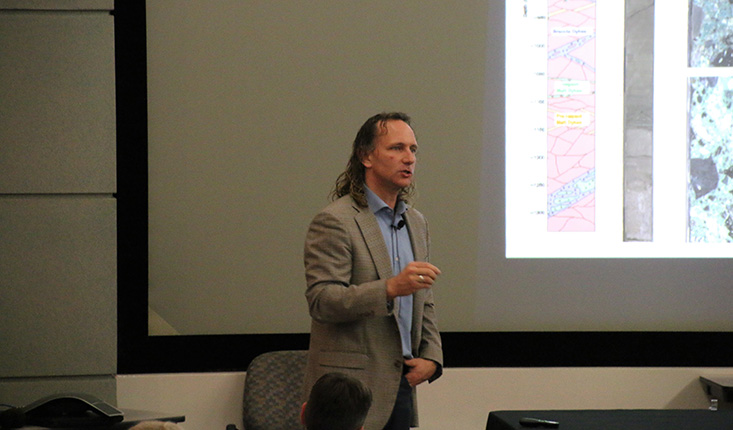Summary by Carrie Pinkard, Science Journalism Intern for USF CMS
ST. PETERSBURG, FL – 66 million years ago an asteroid came hurling into Earth’s atmosphere and crashed near the town of Chicxulub, Mexico. The impact of this asteroid and its after-effects wiped out the dinosaurs and most of the life on Earth. Dr. Sean Gulick, a professor at the University of Texas at Austin, is part of a team that’s drilling into this crater to discover what mysteries it holds.
Here are the five main takeaways from what Gulick and colleagues have unearthed:
1. The impact was global, not regional
When the asteroid hit, it changed the course of the world by wiping out 75% of life on this planet, including all organisms over 25 kilograms. Gulick attributes this mass extinction to several factors. Charcoal was found in the crater, which indicates widespread wildfires occurred on land.
2. The material inside the crater was melt rock
Impact process: the surface earth behaves like a fluid, and the material that is impacted rebounds and splashes back out.
They found granite –not carbonate – in the drill cores of the “peak ring” and realized they had the answer they were looking for…and a paper for Science! Peak ring material that was crystalline, not carbonate rock, means that it came from deeper in the earth (about 10 km) and confirmed which of the two hypotheses for peak ring formation was correct.
3. The granite was visibly fractured
The asteroid impact changed the composition of the rock it hit. The quartz crystal was deformed and the granite visibly fractured.
4. The volume of the rock expanded
The rock found around the crater is much less dense than it should be. The shock pressure moving through the impact expanded the volume of the rocks by 10%.
5. Signs of life were found in the crater
The crater seems to have its own ecosystem. Living cells were found in the crater that indicate a significant population of life lived there for millions of years.
“We found all types of organisms in there. We think there’s a good chance that some of these are survivors that washed back into the ocean,” Gulick said.
